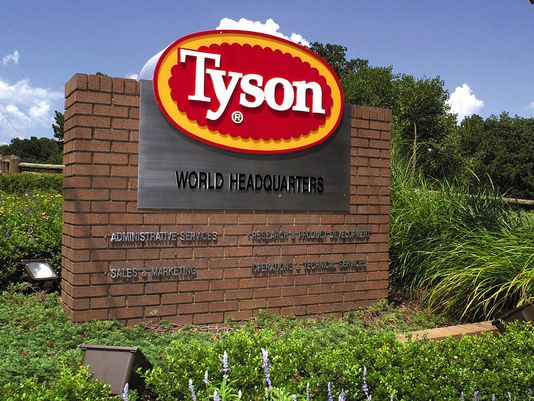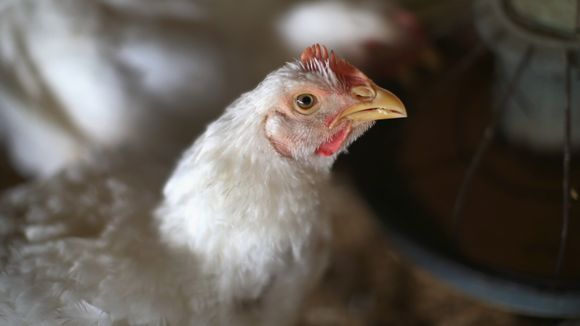Going where some rivals and fast-food chains have already gone, one of the nation's largest poultry producers, Tyson Foods, announced Monday that it will go antibiotic free by the end of the year.
In making its move, Tyson Foods joins competitors like Perdue and Pilgrim's Pride. Also, it mirrors some major fast food and quick service restaurant chains. KFC announced last month it will rid of its chicken of antibiotics by the end of 2018. Also going without antibiotics are McDonald's, Burger King, Panera, Chipotle, Taco Bell and Wendy's.
Tyson said its antibiotic-free pledge will apply to poultry it sells in supermarkets under it own Tyson label. For Tyson and the others, the move is being driven by consumer demand for food free of anything deemed unnatural, whether it's antibiotics, preservatives or something else. Consumer Reports magazine found in a 2015 survey that one of four shoppers were buying meat and poultry without antibiotics more often than they had in the prior year.

Chickens are treated with antibiotics to keep them healthy as they grow. They live in relatively tight quarters, so a single sick bird can infect the flock. Tyson Foods is based in Springdale, Ark.
When antibiotics are out of the mix, companies must look to other strategies to maintain chicken production -- and some are costly. Tyson, for example, says it has better ventilation to prevent illnesses and that its birds are fed a special probiotic diet. All major chicken growers say they are going to special lengths.
"It’s a time to be cleaner, cleaner, cleaner, so you don’t introduce bacteria in the hatchery," said Bruce Stewart-Brown, senior vice president for food safety at Perdue.
Some of the moves add expense, but most chicken producers say they are absorbing the costs rather than passing them on to consumers.
Switching to antibiotic-free poultry translates into about a 10% increase in production costs, according to C. Stephen Roney of the University of Georgia‘s Poultry Diagnostic and Research Center.
"We give them more room. We try to do a better job of management, paying more attention to things that in the past we were able to let slide a little bit. We need more manpower, more litter, more bedding, more feed," he said. "The profit margin is parts of a cent. They’ll have to pass it along to the consumer. It’s a profitable business, but it’s a very narrow margin."
The costs even out as companies learn to reduce flock mortality and fine-tune their processes, he added.
"We will bare the brunt of some of these costs," said Doug Ramsey, who heads poultry operations for Tyson. "We believe we’ll be able to reduce those costs over time through continued improvement."
An exception was Chipotle, which said it raised its prices 25 to 35 cents, but found customers didn't flinch.
"When we’ve had to increase prices to support this philosophy, food with integrity, to these better ingredients that command premium prices, customers have been willing to pay that difference," said spokesman Chris Arnold. "You need to have that kind of price elasticity to do this. A big part of that is the educational piece and teaching consumers about changes you've made and the reasons why."
Consumer pressure and size play a role, too.
"We decided this is the right thing for us to do as a business," said Marion Gross, McDonald's senior vice president and chief supply chain officer, North America. "We’re listening more and more to customers. Wouldn't it be great to use our scale and size for good?"
But the Hartman Group's research found that customers who care about animal welfare make their stance known with their possibly-non-leather wallets. While in the past they may have opted for vegetarian or vegan food, they're now opting for animal proteins again. As more people demand antibiotics-free chicken, the market grows and that ultimately makes prices more affordable.
"They’re going flexitarian; they're being a lot more deliberate about the meat they’re looking to eat and they’re not necessarily spending more, but more and more are choosing to spend more money on higher quality," said Hartman Group consultant Roberston Allen. "There’s lot of money to be made, because there's a lot of consumer demand for that change to be made. The more companies that do it, the more pressure is placed on other companies."
Follow USA TODAY reporter Zlati Meyer on Twitter: @ZlatiMeyer


